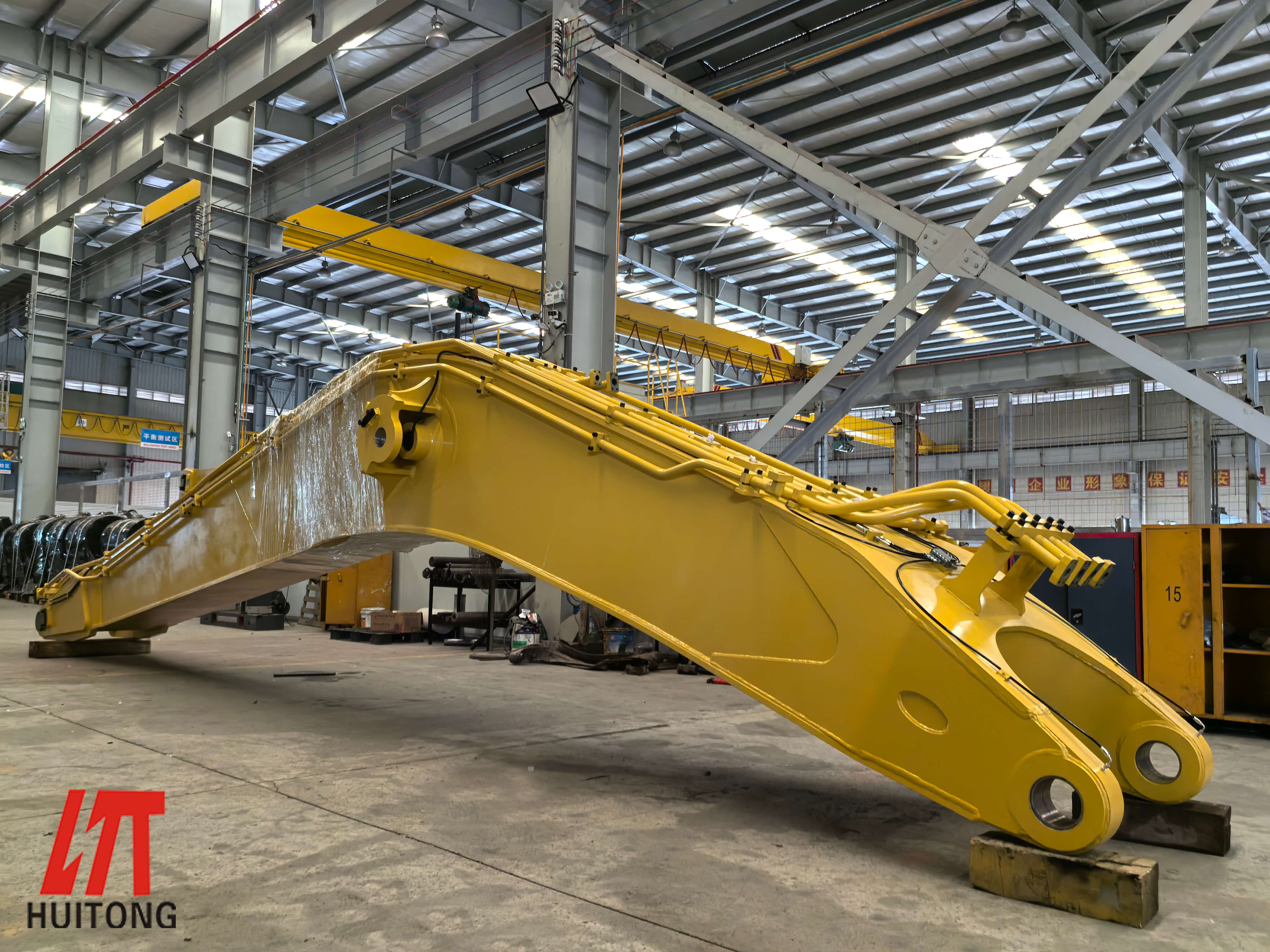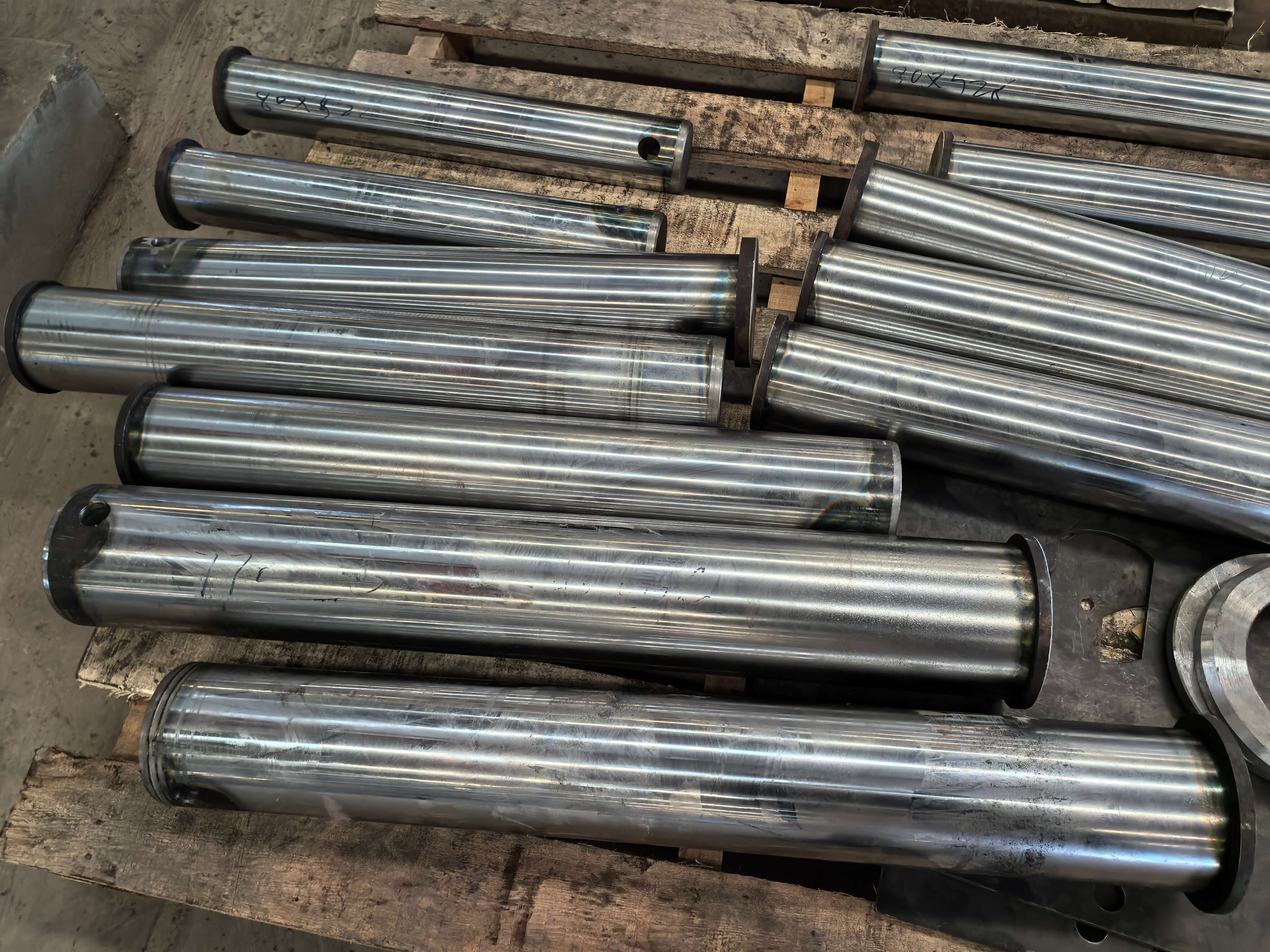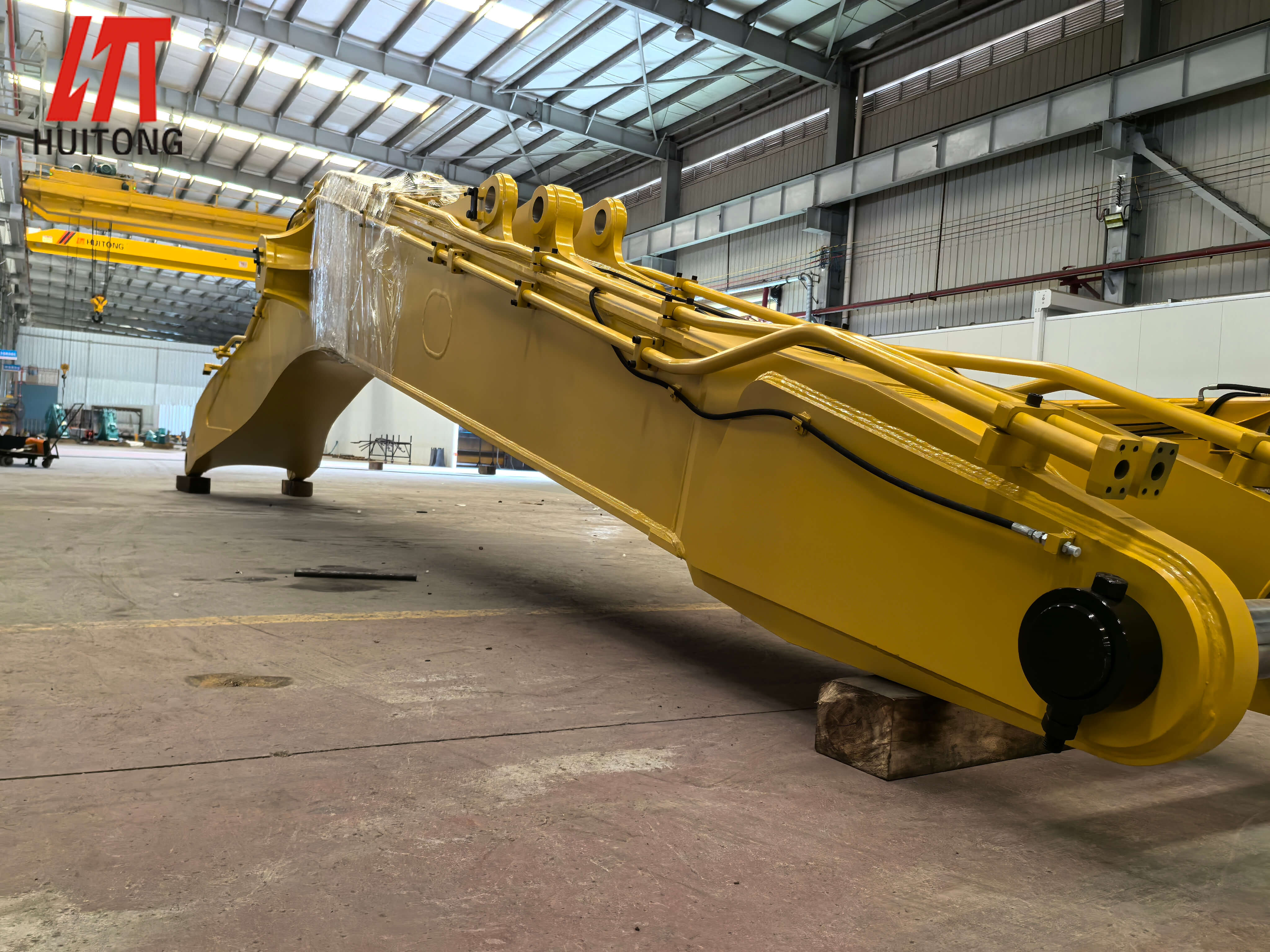 HuiTong
HuiTong  2025-06-13
2025-06-13
Recently, we received a consultation from a customer. During road construction, an excavator modified with an extended arm was working at 1155 hours. When the operator was filling grease, he found that the pin of the excavator long arm had broken. He easily pulled out half of the pin by hand. This seemingly sudden failure is the result of the long-term effects of multiple technical and management factors. The pin is the "joint bone" in the working device of the excavator. Once it fails, it will cause the whole machine to be paralyzed. The modification of the extended arm is like installing a "long arm" on the excavator. Although it expands the operating range, it buries multiple fracture risks.

Design defect: Mechanical challenges brought by the extension of the lever arm
The extended arm expands the operating range by increasing the lever length, but it also significantly changes the force characteristics of the whole machine. When the boom is extended by 2-3 meters, the bending moment and shear force on the pin may increase exponentially, far exceeding the original design standard. Many modification schemes only enlarge the size based on experience, but do not re-perform finite element analysis (FEA) and load spectrum verification, resulting in insufficient size or strength grade of the pin of the excavator long arm.
1. The opening position of the oil filling hole is improperly designed, forming a local stress concentration point, which becomes the origin of fatigue cracks;
2. The matching clearance between the pin of the excavator long arm and the bushing is unreasonable. If the clearance is too large, the impact load will increase, and if the clearance is too small, it will cause lubrication failure and jamming;
3. Insufficient chamfering at the cross-section mutation or the wrong oil groove position further aggravates stress concentration.
Case evidence: A certain type of pin of the excavator long arm broke at the oil filling hole, and the fracture showed typical shell pattern. The crack source was located at the edge of the hole, which confirmed the core role of design defects.
The early fracture of the excavator extension arm pin can often be traced back to "cutting corners" or process out of control in the manufacturing process:
Unqualified quenching and tempering: If the quenching temperature of the 42CrMo steel pin is insufficient (such as below 850℃), unmelted ferrite will remain in the structure, resulting in a decrease in strength. A loader pin broke after only 3 months of service. Metallographic analysis showed that there were blocky ferrites in the matrix, which directly weakened the load-bearing capacity;
Surface quenching defects: Insufficient depth of the induction quenching layer or low hardness (such as requiring HRC55-60, only HRC45 is measured), which cannot effectively inhibit the expansion of fatigue cracks.

Brittle peeling of chrome plating: The hardness of the chrome plating layer (HV800-1000) is much higher than that of the substrate (HV300-400). It is easy to peel off brittlely under impact load, forming abrasive particles to accelerate wear;
Loose nitriding layer: The ε phase of the white bright layer is highly brittle and loose, becoming the source of microcracks and inducing bidirectional bending fatigue fracture.
The deep cuts (>0.1mm) left by turning or milling are equivalent to artificially prefabricated "crack sources";
Insufficient cooling or excessive feed during grinding causes local high temperature to form a secondary quenching layer, resulting in a network of grinding cracks.
The extension arm is not a "universal tool", but many operators push it to the limit:
1. Overload excavation: Use the extension arm to forcibly pry boulders or dig too deep, so that the pin bearing is subjected to a bending moment far exceeding the design value. The pin of a mining equipment was sheared and fractured due to the impact overload of falling coal, and the fracture was flush without plastic deformation;
2. Impact operation: The bucket quickly hits hard objects or rotates rapidly with load, and the instantaneous impact force can reach 3-5 times the static load;
3. Dangerous posture operation: Lateral excavation on the slope causes the pin to bear additional torsional load, accelerating fatigue accumulation.
Poor lubrication is the most common but most easily preventable factor in pin failure:
1. Grease failure: using inferior grease or not filling it on time (such as grease filling once every 8 hours), resulting in dry friction between the pin and the bushing;
2. Seal failure: After the dust ring is damaged, mud and sand invade, forming "grinding paste" to accelerate wear. Actual measurements show that the wear rate of the pin increases by more than 4 times when there is no seal;
3. Only replace the pin without the bushing: the excessively worn bushing will make the matching clearance of the new pin too large, and the severe impact during work will cause secondary fracture. A user broke three pins in succession before discovering that the bushing wear exceeded the standard by 2mm.
To cure the problem of broken pin of the excavator long arm, each link needs to be systematically optimized:
1. Reselect according to the load spectrum of the excavator long arm, and give priority to using 40CrMnMo (tensile strength ≥ 980MPa) to replace ordinary 45 steel;
2. Locally strengthen stress concentration areas such as oil filling holes and chamfers (such as rolling treatment).
1. Replace chrome plating with surface quenching (medium frequency) to ensure that the depth of the hardened layer is greater than 3mm to avoid brittle peeling;
2. Strict temperature control: quenching and tempering heating 850±10℃ to avoid ferrite residue.
1. Install an automatic lubrication system to ensure that grease is injected once per action cycle;
2. Establish a gap monitoring mechanism, and force replacement when the pin-bushing gap is greater than 0.5mm (the original design gap is 0.1-0.2mm);
3. Install an overload alarm device on old equipment to monitor the stress state of the pin in real time.

Conclusion
Although the pin is small, it is the key hub of the excavator's power transmission. Every over-limit excavation of the long arm is accumulating the "last straw" for the fracture of the pin of the excavator long arm. From the mechanical recalculation in the design stage, to a quenching process in manufacturing, to a movement habit when the operator is operating - the rigorous control of each link can make this steel skeleton stand for a long time among the loess boulders. After all, in the fatigue law of steel, there is no sudden failure, only the inevitability of long-term accumulation.